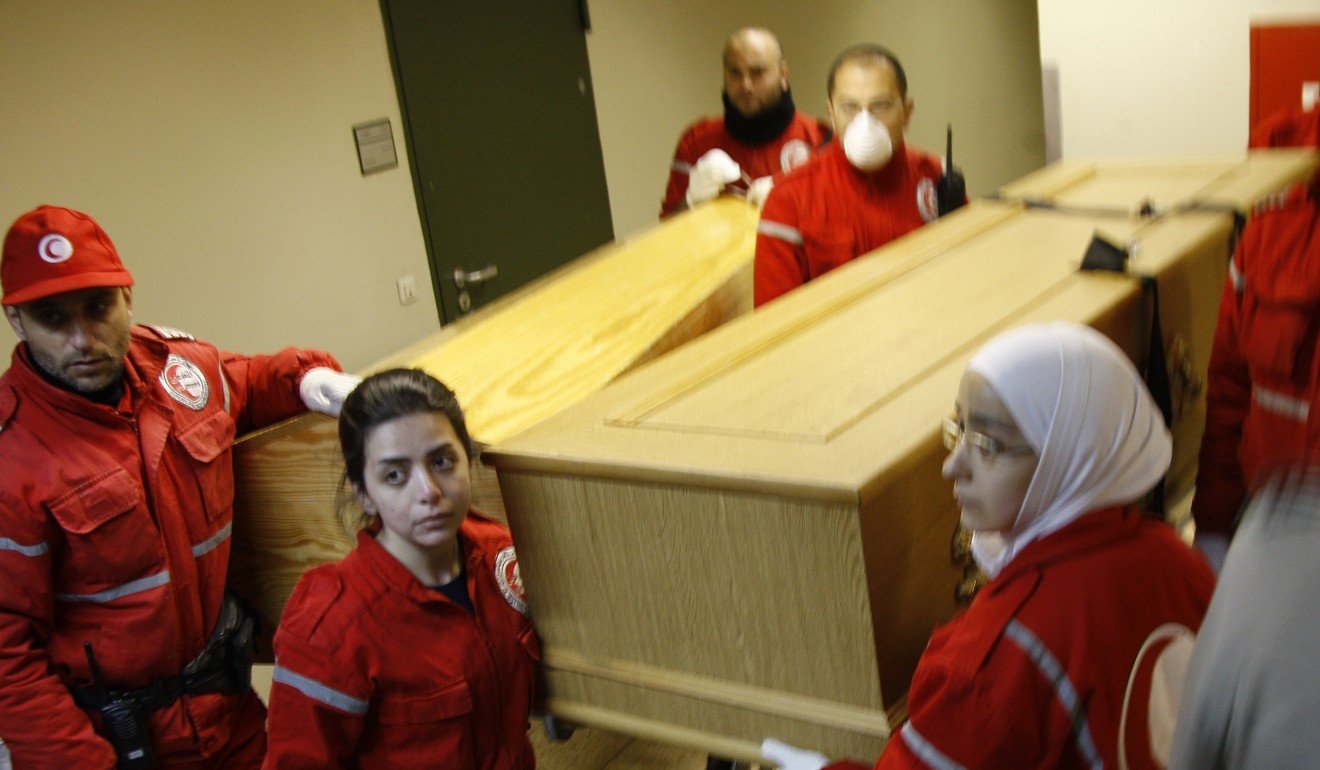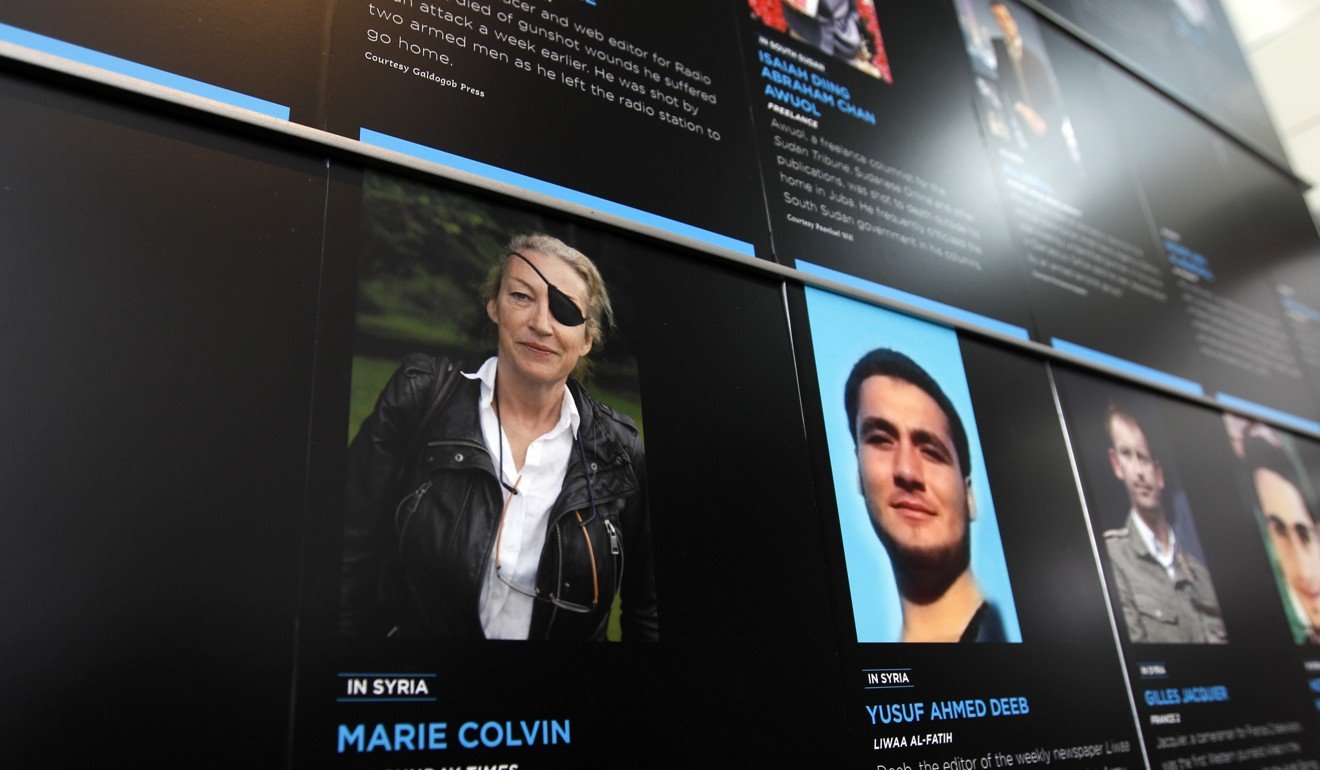
‘Marie Colvin was a dog, now she’s dead’: explosive documents detail how Syrian forces targeted famed war reporter with rocket
New court documents allege Syrian forces targeted veteran war correspondent Marie Colvin and then celebrated after they learned their rockets had killed her
As the explosions grew closer, the reporters and activists working at a clandestine media centre in the Syrian city of Homs decided it was time to evacuate.
American reporter Marie Colvin and a British photographer were steps from the exit when a rocket hit, instantly killing them both.
The Syrian general who allegedly planned and executed the 2012 attack in retaliation for Colvin’s reporting congratulated his men with an impromptu party when he heard the news.
“Marie Colvin was a dog, and now she’s dead,” Major General Rafiq Shahadah allegedly told the group.
“Let the Americans help her now.”
These are among the dramatic details revealed in sworn documents unsealed Monday on the orders of US District Judge Amy Berman Jackson in a civil case against the Syrian government on behalf of Colvin’s sister and heirs.
The Syrian government has never responded in court to the lawsuit, filed in July 2016. But a government spokesman, Mohammed Ramez Turgeman, earlier said the suit “is false by all standards and is certainly not true”.

Lawyers are now asking the judge for a default judgment. The judge must decide whether to hold a trial without a jury but with live testimony, or only use the hundreds of documents submitted by the plaintiffs’ lawyers, which include accounts from Syrian government defectors and government records purloined from the offices of Syrian President Bashar al-Assad’s brutal security services.
If Jackson ultimately rules in the plaintiffs’ favour, which could take months, she would also award damages.
The US government holds millions in frozen Syrian assets, which she could tap as restitution.
Colvin, 56, who was working for The Sunday Times of London, was renowned for her fearless reporting in war zones and recognisable by the black eye patch she wore after losing an eye from the blast of a Sri Lankan army rocket-propelled grenade years earlier.
Times photographer Paul Conroy, who was severely injured in the attack that killed Colvin, has written a book about their final hours.
The unusual insider accounts and records, which include never-before-seen details of Syria’s military and intelligence command and control, and how it was used to target civilians, were obtained by the independent group Centre for Justice and Accountability, which filed the lawsuit on behalf of Colvin’s family.
The San Francisco-based group includes war crimes investigators and lawyers who organised and trained Syrian students, researchers, activists and lawyers to find and extract government records for use in prosecuting Assad and others for their actions during the seven-year civil war.
A former Syrian intelligence officer code-named “Ulysses”, who says he witnessed the general’s post-assassination celebration, said he also watched as a low-level female informant showed intelligence officials where the media centre was located on a map.
While it was not possible to independently verify Ulysses’ account, the fact that he is being debriefed by security agencies overseas reflects their belief that he is credible.
Ulysses also described internal, second-hand conversations indicating that the death of French journalist Gilles Jacquier the month before Colvin’s was also a premeditated assassination.
The government brought Arab League observers and foreign journalists near a staged mortar attack it pinned on rebel forces, Ulysses recounts in his statement.

As Jacquier rushed around covering its aftermath, he was accompanied by an undercover intelligence officer who guided him to a predetermined location at a prearranged time. Government forces then targeted Jacquier but only injured him with mortar rounds.
Wael Salamah, a notorious pimp working with paramilitary forces, was at the ready nearby. He put Jacquier in a taxi instead of an ambulance and stayed with him to make sure he died.
“Salamah’s pre-planned role was to make sure Jacquier did not survive and he did not,” said Ulysses, who has been given refuge in a third country and debriefed by multiple security agencies.
“The government then circulated a fabricated story that rebel forces had killed him.”
In Colvin’s assassination, Ulysses said, the government used both traditional electronic intercepts and a mobile satellite tracking device mounted on a vehicle that drove around the Baba Amr neighbourhood, honing in on Colvin’s whereabouts before the attack.
In one of Colvin’s last broadcasts, she invited viewers to watch with her as a two-year-old died in a basement from shrapnel wounds.
The regime’s claim it was only targeting combatants was “a complete and utter lie,” Colvin told CNN’s Anderson Cooper in her last broadcast before she was killed. “ … the Syrian army is simply shelling a city of cold and starving civilians.”
Additional reporting by Associated Press

